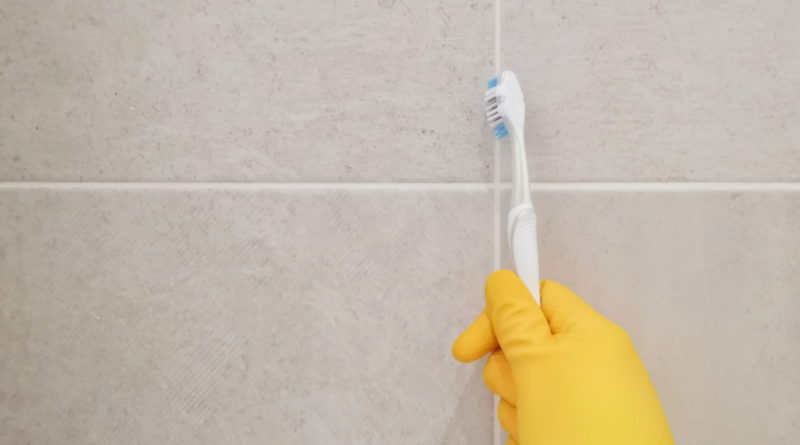How to Clean Grout Without Using Bleach
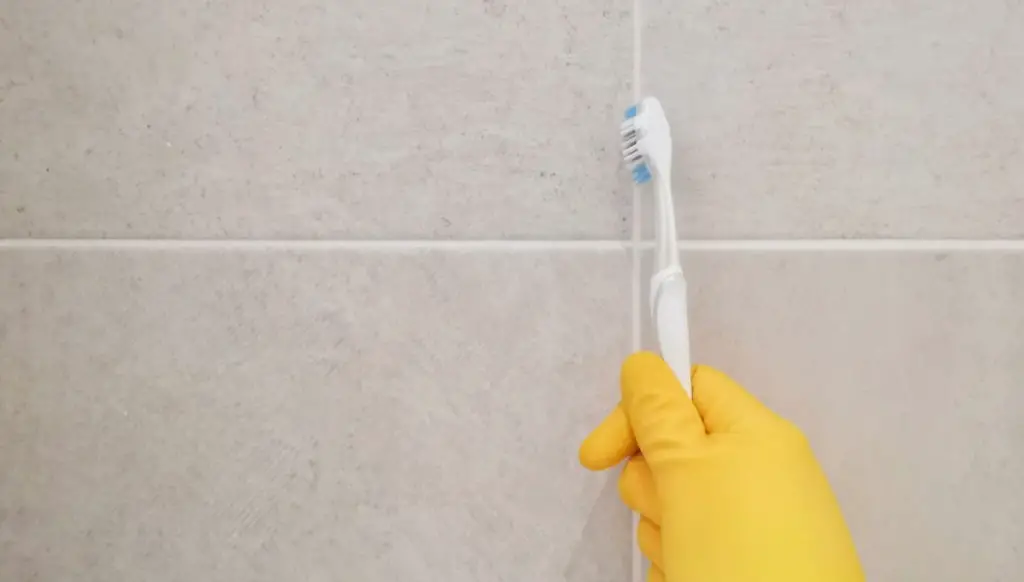
Cleaning grout can be one of the more challenging chores. Some of us think that bleach is the go-to cleaning solution for this job, however, for those of us with bleach sensitivities, it becomes even more of a challenge. And, in some cases, we avoid it altogether.
There are other products, such as vinegar, lemon juice, and hydrogen peroxide, that will also do the job. By the way, I tested these homemade solutions as well as two commercial products for effectiveness and ease of use.
So, let’s take a look at the process and some cleaners for cleaning grout without using bleach.
What is Grout?
It’s important to understand grout and its composition to have a better sense of the material that you’re dealing with.
Grout is comprised of cement, water and, sand, and may contain other plasticizers and pigments. It fills in the open spaces between tiles, bonding the pieces together in a secure wall or floor.
And, is porous and susceptible to mold and mildew growth. Since these tiles are often found in kitchens and bathrooms, regulating moisture levels is important.
So, if you find that dirt and mold are starting to form in the grout, there are effective cleaning solutions you can use, without having to resort to bleach.
The Best Process to Clean Grout
Following is a step-by-step process for cleaning grout:
- Prepare your stiff scrub brush or toothbrush.
Ideally, you want to use a brush with nylon bristles, that is easy to handle, in order to scrub across the fine grout lines. Or, use an old electric toothbrush. This will reduce the amount of scrubbing effort.
- Choose your grout dirt remover of choice.
There are a variety of options available, as listed below. You can try the various cleaning solutions depending on what you have available, or the type of stain you see in between your tiles. You can even try them all out to test out your preferences.
- Spray or splash it on the grout.
Apply your chosen cleaning solution all over your grout. Some of the cleaners listed are diluted with water and used as a spray for easier application on the grout lines.
- Let the solution sit for a while.
For the solution to kick in with its bacteria-killing properties, you need to let it sit for a while to do its work. A good rule of thumb is 10 minutes before getting to work on the grout.
- Use some elbow grease and scrub away.
Using your handy brush, scrub, and scrub away at the stained grout! Remember to use gloves even if you aren’t handling hazardous chemicals. Gloves will protect your hands from the dehydrating ingredients in the solutions you are handling.
- Wipe the grout dry.
Once the grout is clean, wipe the remaining moisture and any dirt fallout from the tile surface.
- Consider using grout sealant.
After the grout is clean and dry, you can apply a sealant that will protect the grout from future mold growth and staining. This could also save you the time and effort of cleaning grout too often!
What are the Best Grout Cleaning Solutions without using Bleach?
- Hydrogen peroxide
Hydrogen peroxide has the right antifungal and antibacterial properties that you need to get rid of mold. It’s also safe to use on surfaces and the grout itself. Mix equal parts hydrogen peroxide and water in a spray bottle for easier application on the grout.
The hydrogen peroxide and water mixture is reasonably effective, and easy to scrub clean.
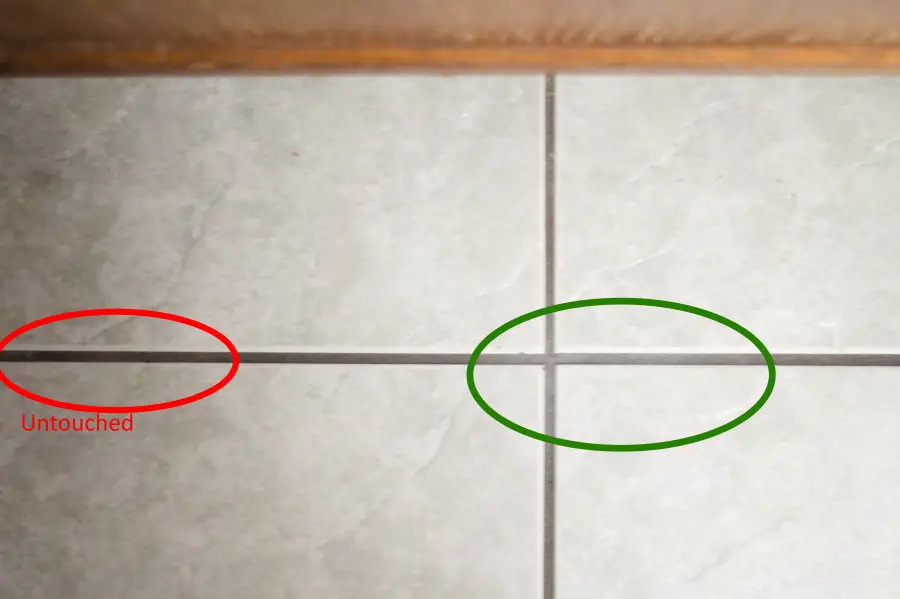
- Boiling Water
If the mold hasn’t latched on and spread through your grout, then some boiling water might be a consideration. The hot water sterilizes by killing bacteria and can work on stains along with a good scrubbing. The downside is you want to keep the water as hot as possible, so you must work quickly to make sure your kettle is still full of bacteria-killing heat.
This method works, however, as noted above, because the water needs to stay hot, it can cool down while you’re scrubbing. This is inconvenient.
- Vinegar
This kitchen staple has been a natural cleaning favorite for a lot of household tasks. Its acidic nature helps its antibacterial properties prevent the growth of mold and mildew. It would be good to dilute your vinegar solution with water, as pure vinegar can be too acidic and corrosive for your grout.
The vinegar solution did not work as expected. It removed some grout but still left some behind even after vigorous scrubbing.
- Lemon Juice
Take advantage of another naturally acidic kitchen item with lemon juice. You can pour it into a spray bottle for easy application. It also leaves an incredible aroma in your room!
When I tested the lemon juice, I was pleasantly surprised to discover that it worked quite well, however on heavily stained grout it wasn’t as effective. Concentrated lemon juice can be cheaply obtained. In addition, I was able to use a container that had expired and was no longer suitable for consumption.
- Baking soda
Baking soda lends some extra scrubbing power to your cleaning process. Create a paste by mixing some baking soda and water. The tougher the stain, the thicker your paste. This gentle cleanser also provides little particles that add an abrasive touch to force out dirt and grime from the grout.
Baking soda paste also did a good job. This is another inexpensive, easy solution.
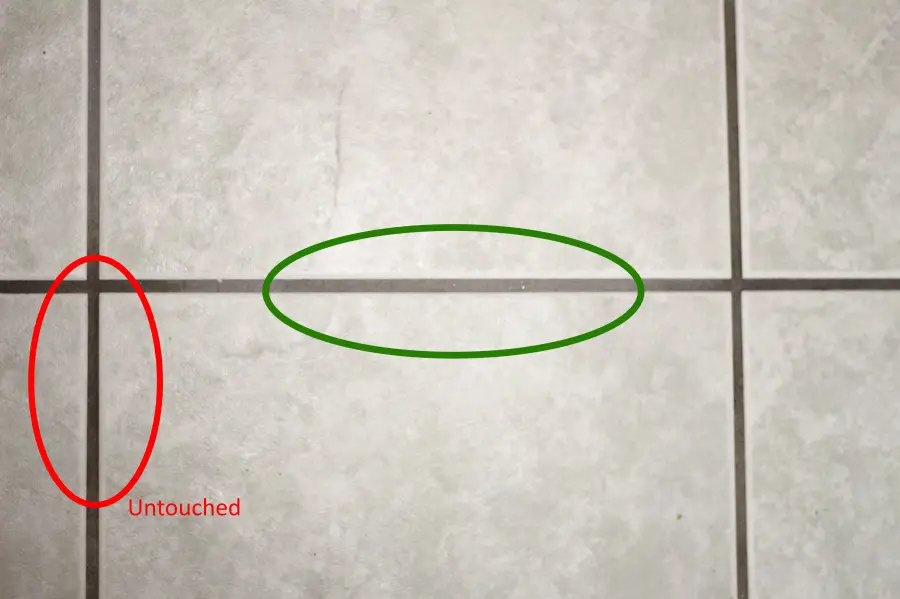
- Tea tree oil
You might already be familiar with the antibacterial and antiseptic properties of tea tree oil. Create a mold fighting spray solution with one teaspoon of oil for every cup of water.
This worked moderately well. In addition, it has the disadvantage of having a strong smell.
- Commercial products
There are a lot of products in the market formulated to mimic the strong cleaning power of bleach without the strong fumes.
I tested two commercial products. One was Goo Gone Tile & Grout Cleaner and the other was Rejuvenate.
Both Goo Gone and Rejuvenate performed quite well. However, Rejuvenate did not easily remove heavy stains as well as Goo Gone.
Goo Gone foamed up right away. And the bottle included a sprayer for easier application.
Rejuvenate came out as a clear liquid but foamed up upon scrubbing. However, as it did not include a sprayer, I had to exercise caution when pouring the liquid so as not to waste it.
Remember to follow manufacturer’s instructions for safety and effectiveness.
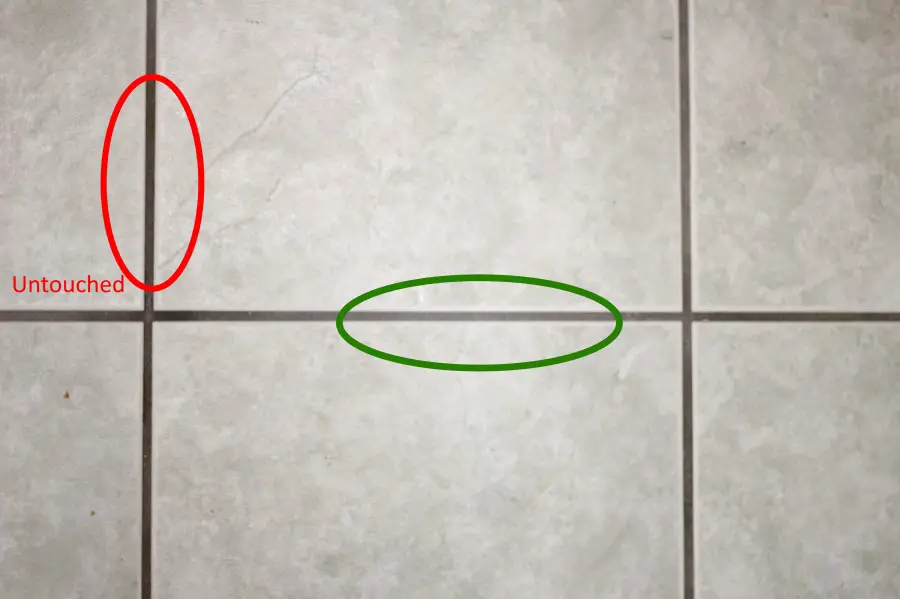
Product summary
| Cleaning Solution | Personal Rating |
|---|---|
| Goo Gone Tile & Grout Cleaner | A |
| Baking soda | A |
| Hydrogen peroxide | A |
| Rejuvenate | B+ |
| Vinegar | B |
| Lemon Juice | B |
| Tea tree oil | B- |
| Boiling Water | C |
Recap
All of the above solutions and products allow you to clean your grout without using bleach.
And, restore the color of your grout.
The most effective methods I found were lemon juice, Goo Gone, and Rejuvenate.
Whether or not you use a commercial product or a homemade grout cleaner you will be able to clean your grout without using bleach.
While grout-cleaning may not be on your top ten list of favorite chores, having clean grout makes a difference in your home.
At the end of the day, you will be happy when you restore your entire floor to its former beauty.
